
23 minute read
The Girl Who Dug Up Dinosaurs
If you Google “India Wood allosaurus,” the first thing you’ll find is a 1984 article from People Magazine, and it reads like the fantasy of every dinosaur-obsessed kid in the world: A 12-year-old girl single-handedly discovers and begins excavation on one of the bestpreserved allosaurus specimens in the history of paleontology. The bones will go on display in the Denver Museum of Natural History.* Her future as a paleontologist is guaranteed. She’s off to an Ivy League school. She’s famous.
This story is edited with permission from a broadcast of the Wish We Were Here series on KRCC, Southern Colorado’s National Public Radio station. The show’s creators are Noel Black and Jake Brownell. You can listen to the broadcast at: krcc.org/post/wish-we-werehere-episode-13-girl-who-dug-dinosaurs. This is the story of India Wood ’84’s discovery and excavation of a remarkably well-preserved allosaurus skeleton when she was only 12 years old.
Born in 1966, India Wood was raised in Colorado Springs. Her parents were local art royalty.
“Both of my parents were crazy artists,” she says. “My father, Myron Wood, was a fairly well known photographer. He photographed Colorado** and New Mexico extensively.”

Myron Wood is best known for his iconic portraits of the artist Georgia O’Keeffe at her home in Abiquiu, New Mexico.
“My mother, Nancy Wood, was a writer. She wrote about 30 different books.*** So I grew up in a house that probably wasn’t very normal, and I think that probably had a lot to do with thinking that digging up a dinosaur was just something you could do.”
Myron and Nancy Wood divorced when India was 3 years old. She remained close with her father but lived mainly with her mom who suffered from manic depression. Nancy Wood’s work took her all over the Southwest. “My mother took us lots of places,” recalls India. “After my father left my mother, we had no money. Mother would look for vacation opportunities at friends’ places, and the ranch up in northwest Colorado was one of those places. It was a free vacation.”
* Now the Denver Museum of Nature and Science ** Including Fountain Valley School *** Including Little Wrangler, a children’s book about a young boy growing up on a real cattle ranch in Colorado. The boy was former FVS trustee Kirk Hanna ’71, P ’07, ’09, and the photos are by Myron Wood. 25
Managed by a salt-of-the-earth cowboy couple named Minford and Judy Beard, the ranch epitomized everything Nancy Wood mythologized about the West in her books: a free, spiritual relationship to untamed land, wild horses and radical self-sufficiency. It was situated on almost 20,000 acres of arid land near the borders of Utah and Wyoming. Beginning at the age of 8, India, her siblings and her mother would regularly make the nearly seven-hour trip from Colorado Springs to the ranch. They’d go up for weeks or even months.
“For me, the ranch that Minford and Judy ran was a refuge for me, it was like this other planet that I could go to,” India says. “It was just this peaceful place, and Minford and Judy lived in a cabin that had been built in the 19th century. It was just a little place, and we’d get there and Minford and Judy would come out there in their matching plaid shirts, give us a big hug, and they both wore
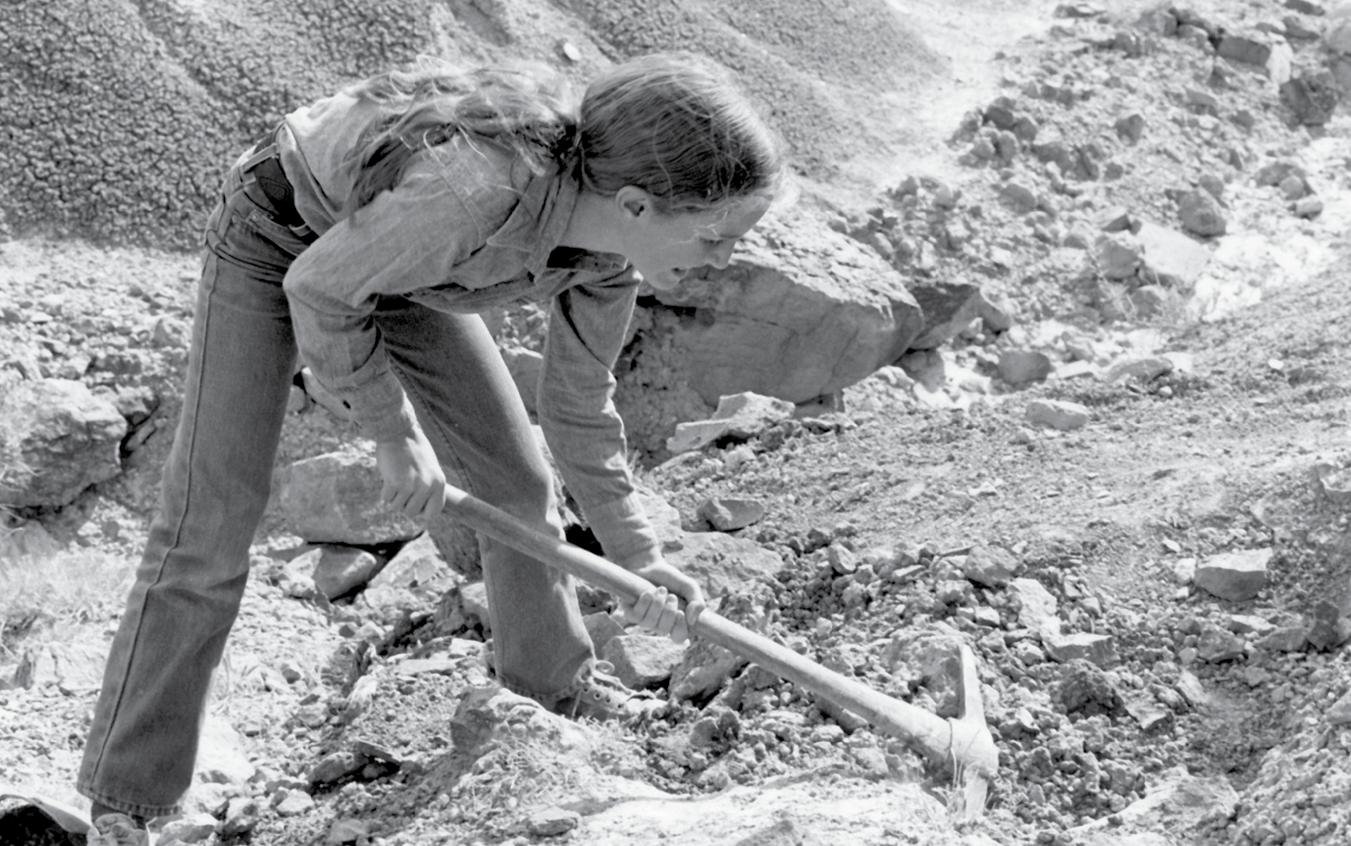

Digging for dinosaur bones at age 12 in Moffat County, Colo.
this musky cologne that to this day, if I ever get wind of it, it just makes me think of them.” For young India, Judy was a complicated, but intriguing role model.
“On one hand, she was this kind of frontier woman but at the same time, she was an intense observer of nature. She knew the birds, she knew the animals that were around. She had come to know what fossils were out there, and she wasn’t a scientist. I don’t think she’d ever been to college...she was kind of an amateur paleontologist.”
The only problem was, Judy hated kids. So rather than entertain India and her sister Kate, Judy came up with chores to get them out of the house.
“She can’t figure out what to do with us, so she says, ‘There are 10 tons of rock salt that need unloading, why don’t you go help for
two days?’ She carts us out there in the truck, and we help the ranch hand unload 10 tons of rock salt.” But despite the tension with Judy and the occasional bouts of hard labor, India grew to love it at the ranch. It was big, wild, and judging by the artifacts scattered around Minford and Judy’s cabin, full of natural treasures. There was a chunk of dinosaur bone in their fireplace. It wasn’t long before India started begging Judy to show her how to hunt for dinosaur bones.
Just a stone’s throw from Dinosaur National Monument, the ranch was cut through by a towering hogback of sandstone known as the Morrison Formation, a layer of mostly red sedimentary rock dating back to the late Jurassic period. It’s one of the richest and most accessible deposits of dinosaur bones in North America. Minford and Judy’s ranch couldn’t have been better situated for bone hunting.
Eventually, Judy agreed to take India and her sister out to search for fossils. India was 10 years old, and she was hooked. The next day, she went back out with a ranch hand to look for more. She’d found a new hobby, and Judy had found a way to get rid of the kids for hours on end.
After that trip in 1975, India and her family didn’t return to the ranch for a few years. Her mom was broke. But in 1978, things changed. Her mom remarried a wealthy, Yale-educated rancher who owned land and livestock east of Colorado Springs. He had a small plane and would fly the family to visit Minford and Judy on breaks.
When they weren’t helping out with the backbreaking chores dreamed up by Judy, India and her sister would go out looking for more dinosaur bones. India remembers the day she made her first big find: “As usual, I had my jean pockets full of rocks that I had picked up, but the problem when you’re 12 years old is that your pants fall off,” Wood says. “My pockets got so full of rocks that my jeans would almost be down around my knees. So there I am waddling up this little ravine, and I look up just about shoulder level, and it looks like a little log is sticking out. I backed up to look at it, and it looked like dinosaur bone. I probably yelled something like ‘Holy shit.’ Judy confirmed that it was a dinosaur bone.”
With help from Minford and a pickaxe, India pried the bone from the sandstone and in the huge block was a beautiful piece of dinosaur bone about two and a half feet long. India didn’t know what the bone was, but she wanted to find out. “I brought it home with the rest of my natural history collection—arrowheads, ammonite and buffalo bones—but the dinosaur thing was really different. None of my friends had dinosaur bones in their bedroom,” she says.
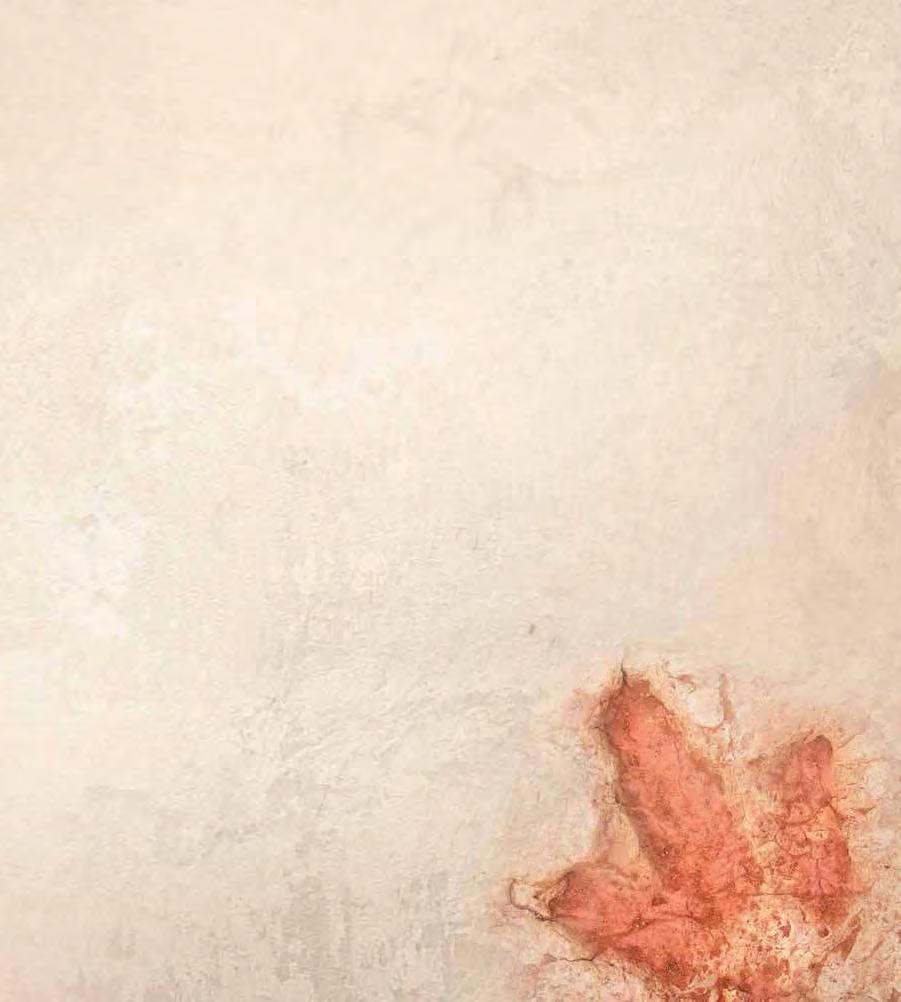
India tried to identify the bone she’d found, but no luck. Nevertheless, she was eager to get back out to the site to see if there was more where that came from. Six months later, she had her chance. After a few days of obligatory ranch work, she convinced one of the ranch hands, Kenny, to take her and Kate back to the spot where she’d found the big bone. As they ventured out into the craggy terrain, India lagged behind Kate and Kenny, taking time to inspect every interesting rock she saw. Eventually, she looked up and realized she was alone.
“Kate and Kenny were out of sight, which made me feel kind of anxious because I was just 12 years old in this huge landscape with the wind howling over
This was a big dinosaur with lots of bones. But what was it? She had a serious paleontological site on her hands, so she had to get serious about paleontology.
the edge of the hogback because it was March. It was like I’d been abandoned on the moon or something, but I still can’t resist looking for bone. I see this little piece sticking out of the hillside at an odd angle...so I get down on my knees and start digging. I assumed it was just going to be maybe a few inches long, but it kept going back. I think I had a screwdriver or an ice pick that Judy had loaned me, and I kept digging back and the bone just keeps going.” Kate and Kenny helped her chip away at the dirt and rock, slowly revealing the bone.
“The whole thing is the size of a turkey platter and with these really cool marks on it, almost like the topography of a map, like one of those relief maps of Colorado with the mountains on it. The bone had these funky ridges and bumps on it which I later realized were where the muscles and tendons had attached to the dinosaur’s pelvis.”

Even at 12, India realized she had come across something significant. If nothing else, it was a big and largely intact dinosaur bone. And unlike the last bone she’d found, it had been relatively easy to excavate.
Not surprisingly, she wanted to bring it home, but the bone would be too heavy for the small plane. There was nothing she could do but throw a tarp over it and hope that no other fossil hunters would stumble across it. Another anxious six months passed before India could go back.
Now 13, India returned to Minford and Judy’s ranch at the end of the summer of 1979 with her sister Kate. She’d come for the dinosaur bone she’d excavated. Too heavy to move by herself, India enlisted Kate’s help.
“We got this big bone out in big chunks, put it in a backpack—it weighed a ton—and I look over at a rock that I had used as a stool a couple times, and it’s a vertebrae. It’s shaped like a big spool, maybe a little less than a foot in diameter, and so Kate and I dig that out.”
Then they saw another. By the time they went back to Colorado Springs, India had bagged five bones. Her instinct about the dig site had been dead on. This was a big dinosaur with lots of bones. But what was it? She had a serious
Wood’s 1986 drawing of the humerus of an early mammal from the Upper Jurassic. India found the very rare specimen, 1.7 centimeters long, as part of the 1985 excavation.

paleontological site on her hands, so she had to get serious about paleontology.
India went to the library. They had great paleontology reference books, but she couldn’t check them out. “So I asked my science teacher at North Junior High. He was also a geology and paleontology enthusiast, and he had The Osteology of the Reptiles. He usually never let a book out of his room, but he let one out for me.”
She brought the book back to her bedroom. “Here I had this bone on my desk that was 30 inches long, and the diagrams in the book were an inch long, so it was really hard to figure it out. Going through the book, I saw this picture of
an allosaurus pelvis, and no
question it was that bone.”
The ilium bone to
be precise. She double checked a few of the other bones she’d found against the diagrams in the book. They all matched up. This was her dinosaur: the allosaurus, 150 million years old. In its day—the late Jurassic period—it was at the top of the food chain, preying on large herbivores like the stegosaurus and sauropod.
Wood digging for Upper Jurassic mammals and reptiles, 1985, age 19. India received grants from Dartmouth College and the Mellon Fund for her 1985 expedition.
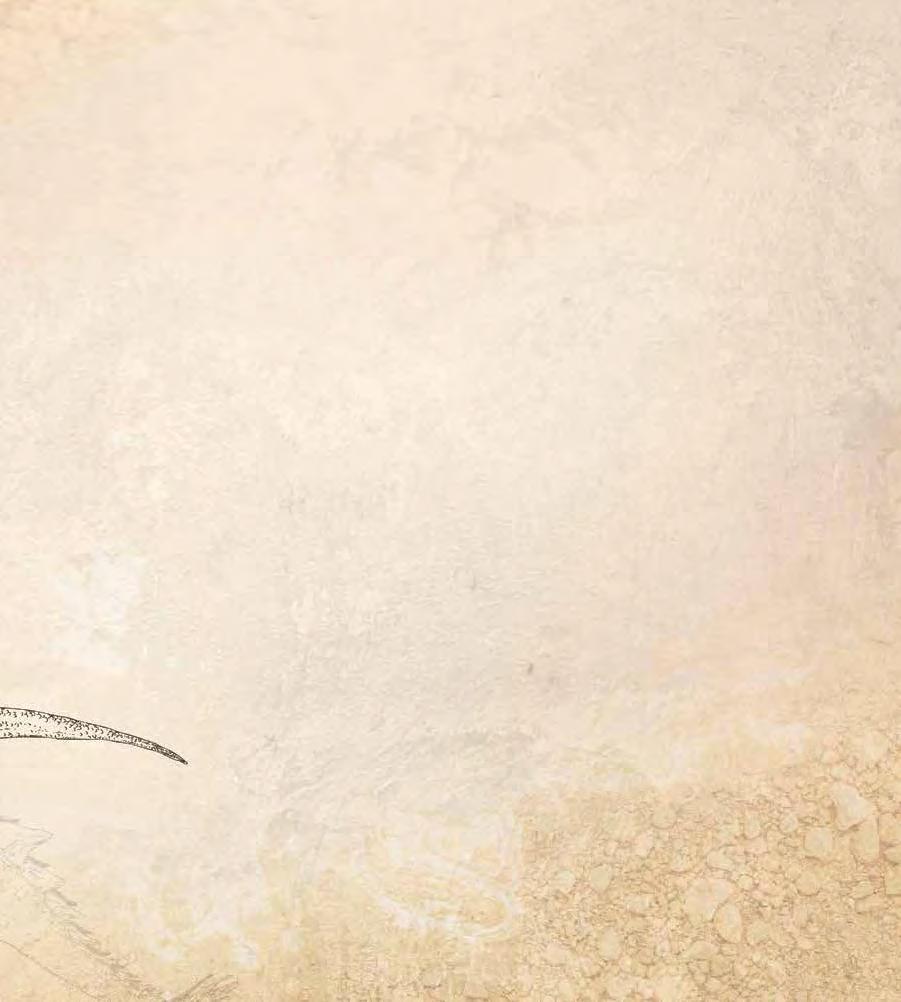
She immersed herself in research and learned everything she could about the allosaurus and about the era in which the allosaurus lived. Her friend [and FVS classmate] Marjorie Ague Eirif ’84 remembers India during that time.
“She was not the typical student who just depended on teachers to teach her,” Eirif says. “She was teaching herself; she was constantly focusing on a particular topic and doing as much research as she could into that topic. She knew all of the different periods of time, and she could quickly tell someone that these were the animals walking the earth at this point in time, and these were extinct.”
Over the next few years, as she worked her way through middle school, India returned to the ranch every six months or so. With each visit to her allosaurus site, she grew more confident in her ability to remove and preserve the bones she found, and more aware of the mistakes she’d made during previous trips.
“At age 12, you want the big bones, baby, and any of the little stuff, I’d throw it down the hill. By the time I was about 14, I began to realize, India, you are an idiot. You have been an incompetent fool, and you have tossed a lot of dinosaur down this hill. It was kind of horrifying looking back and to realize that I was really, woefully unqualified, but I resolved I’d get better at this. I became much more meticulous about saving every piece and gluing things together much more carefully using Elmer’s glue.”
Meanwhile, her bedroom in Colorado Springs was beginning to overflow with bones. She had bones on her desk and bones in cardboard boxes under her bed. The allosaurus was taking over. No one in her life seemed to think it was all that peculiar, her mother least of all. “My mother was an incredibly talented writer and photographer, but she was very laissez-faire in her child rearing practices. By the time I turned 14, my sister was off to college. My mother would give me $50 every Monday, and she would disappear to Boca Grande to write her books and come back the next Sunday. I was by myself at our house from about age 14 to age 18, and I did whatever I pleased.”
And what she pleased was to keep digging up the dinosaur. She continued to learn new techniques like how to make a plaster jacket in the field so she could more safely transport bones back to Colorado Springs. She got better at reconstructing bone fragments using glue and epoxy. Just 14 years old, she was now presiding over her own private, semiprofessional dig site.
As she spent more and more time with the bones, she grew attached to the 150-million-year-old allosaurus. Though she didn’t know the gender, she named it Alice after the woman in the song “Willin’” by Little Feat.
But the relationship she developed with Alice also came with loneliness and doubt. While her friend Marjorie might have thought it was cool, a bedroom full of dinosaur bones didn’t exactly make her popular. She was lonely.
Nevertheless, she kept digging. By the time she was 15, she’d excavated and reconstructed 18 bones from the site. She’d also come to learn that the allosaurus was a relatively common dinosaur and that allosaurus bones had been found all over the West. While she was still passionate about her find, she was unsure if real paleontologists would be all that interested. That is, until she found the skull.
“I was 15 and a half, I was digging up there by myself, and I come across this bone that looks like a trailer hitch. It had a big ball on the end but it didn’t look like a leg bone or anything; there was all this complicated bone around it.”
The discovery of a dinosaur skull is always significant because they’re much more fragile than other bones and rarely survive the fossilization process. And when they are found, excavation can be precarious.
“The thought strongly occurred to me that I am completely unqualified to be doing what I’ve been doing for three years, and around that same time my mother concluded that a 15-year-old girl’s bedroom should not look like a rock quarry.” Encouraged by former science faculty Anne Mariner P ’82, ’83, ’88, GP ’14, ’16, India decided it was time to take a shoebox full of Alice’s bones to the Denver Museum of Natural History for an expert opinion. If the bones were good, maybe the museum would take them.
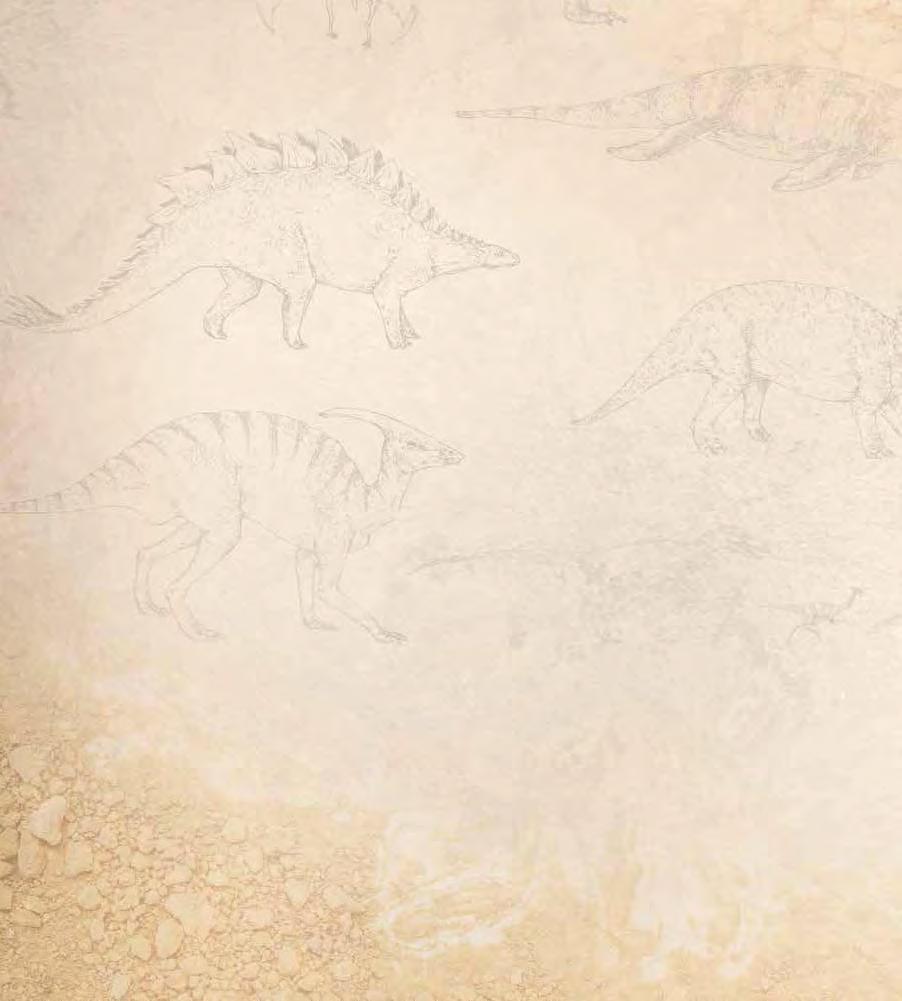
She filled out a form, handed over the box on a Friday afternoon and didn’t expect anything further. On Monday, India returned home from Fountain Valley School at 5:30 after gymkhana riding practice. “The phone rings, and this guy is on the phone. He sounds like an elf who’s had 10 cups of coffee. He said, ‘This is Don Lindsey calling you from the Denver Museum of Natural History.’ He was beside himself with joy, and he asked where I got the bones. I told him that I found them on a friend’s ranch. He said he’d really like to
see the site because these bones are really unusual in that they are so well preserved. He asked me who dug them up. I said that I did. He asked if I was a graduate student. I told him I’m 15.”
Lindsey was the assistant curator of paleontology at the Denver Museum of Natural History. He’d been with the museum for about a decade at the time and had spent time on digs all around Colorado. He was on the lookout for a new site. They arranged to meet in Denver and drive together to the ranch. India was thrilled. In the last year, her family life had imploded. Her mom and stepdad had separated, meaning India could no longer count on her stepfather for the financial and emotional support that her mother often couldn’t provide. Her father had also split with his wife, whom India adored.
The sacrum (fused pelvic vertebrae) of the allosaurus found by Wood, held by Logan Ivy, collections manager at the Denver Museum of Nature and Science. The bone was too big and heavy to include in the museum’s 1995 mount.
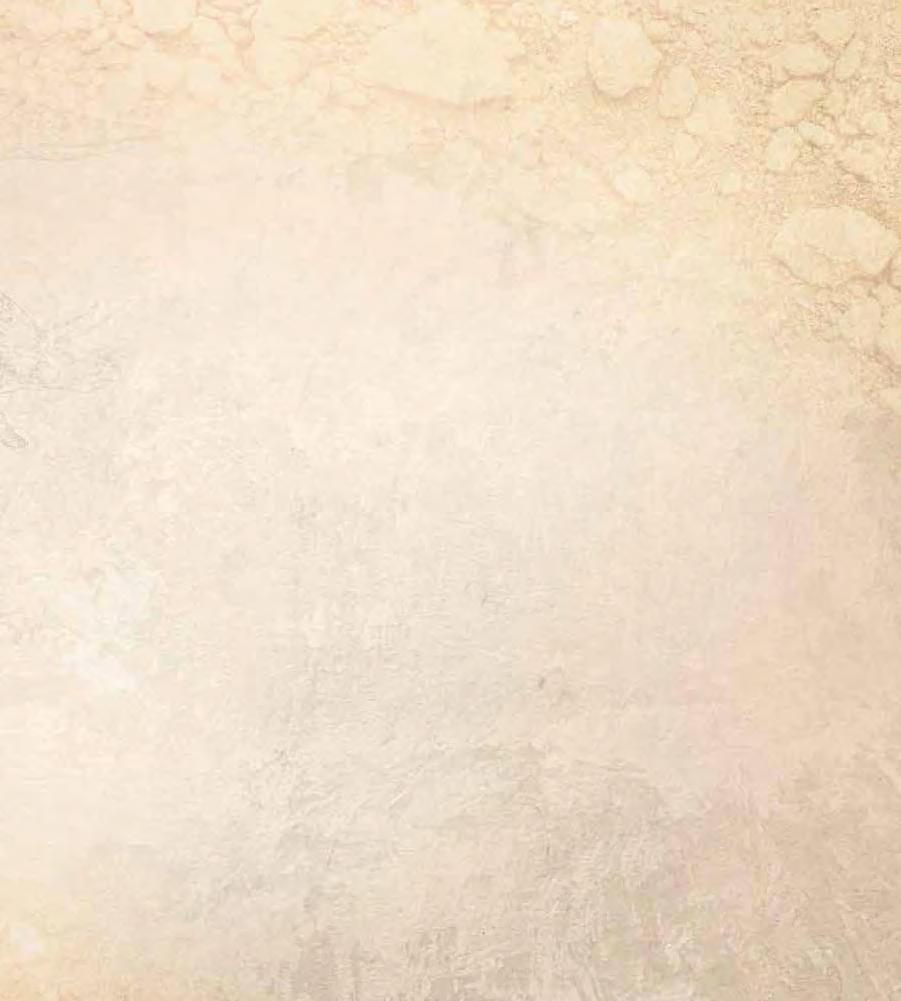
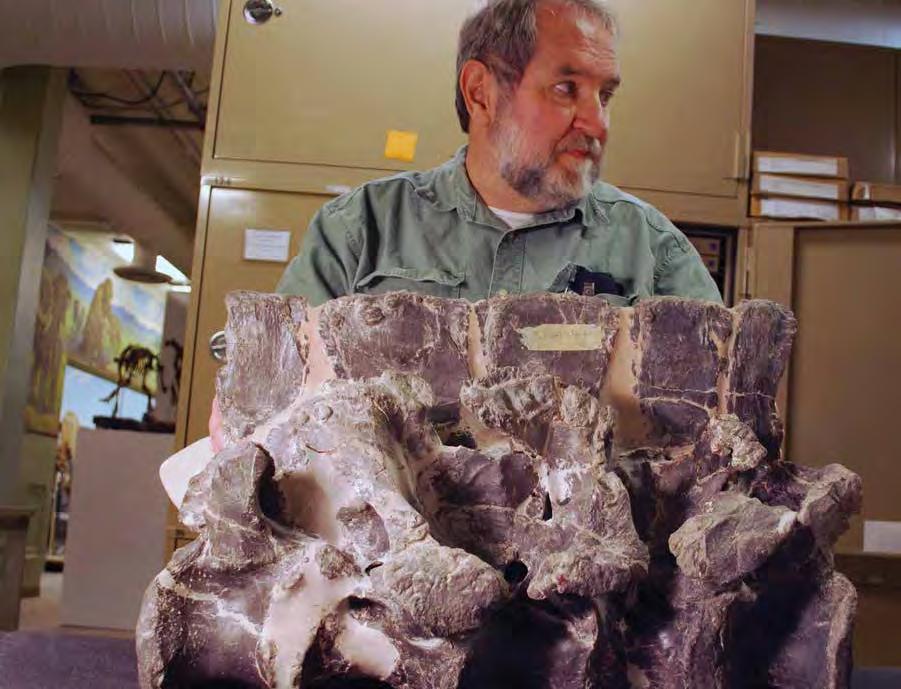
India knew her mom and dad on their own could never afford the Fountain Valley tuition. Suddenly, with Lindsey’s call, came a whole new set of possibilities. The two of them drove up to the ranch together, and India led Don out to the allosaurus site. He was impressed and told her he’d have a field crew come and dig it up. But India wasn’t about to simply turn over her dig site. She told him that if he wanted her bones, he had to give her a job. It worked. He hired her as a field assistant alongside his son, Jim, who was her same age. Not only had India gotten what she needed, she had managed to secure a dream job. The dream quickly became reality, however, and the initial excitement didn’t take long to wear off. She and Jim did the lion’s share of the digging that summer. They did manage to excavate more than half the site.
They left in September. India and Jim returned to school. There was still work to be done, but it would have to wait until the following summer. India was again mostly alone at home and to make matters worse, her mom had a falling out with Judy.
That I could be in this place that was so separate from the rest of the world with Jim and Don with whom I shared all these interests in nature, and then with Minford and Judy, it was this microcosm. It was like being inside of a Faberge egg, at least my kind of Faberge egg. There were no jewels and no rich people, but it was this little world.”
Against her mother’s wishes, India decided to go back to the ranch. Though she’d had some reservations about spending another lonely summer in remote northwest Colorado, she figured she’d come too far to give up on her allosaurus. The second summer picked up where the last had left off. They returned to the site and continued the excavation. They dug further back into the hill, getting to some of the more difficult bones to unearth. They also began to uncover fossils of small micro-vertebrates and mammals that would prove later to be even more scientifically valuable than the allosaurus.
As a budding scientist and paleontologist, India had in many ways come into her own. But at 17 years old, she was a teenager. India and Jim’s friendship grew into a romance. Everything she’d been working toward and hoping for seemed to converge that summer at the ranch. It was a refuge, a place where she found everything that seemed so elusive in her ordinary life at home: romance, adventure and a sense of belonging in the world.
“I think being up there was kind of a divine existence in that here I was on this spot on earth that was so special that the ground had a dinosaur in it that was 145 million years old, and I had stumbled across it. As the summer wound down, so did the dig. They’d removed all the most accessible bones and sent them back to the museum in Denver. Don decided that he wouldn’t return to the site for further excavation. Whatever was left of Alice in that hillside would remain there.
The following year, India was written up in People Magazine and was admitted into several Ivy League colleges on the strength of her allosaurus research and her grades. But with the dig over, she also felt like she’d begun to lose her connection with the dinosaur she’d found. During her senior year, she tried to stay involved in the preparation of Alice’s bones back in the lab at the museum.
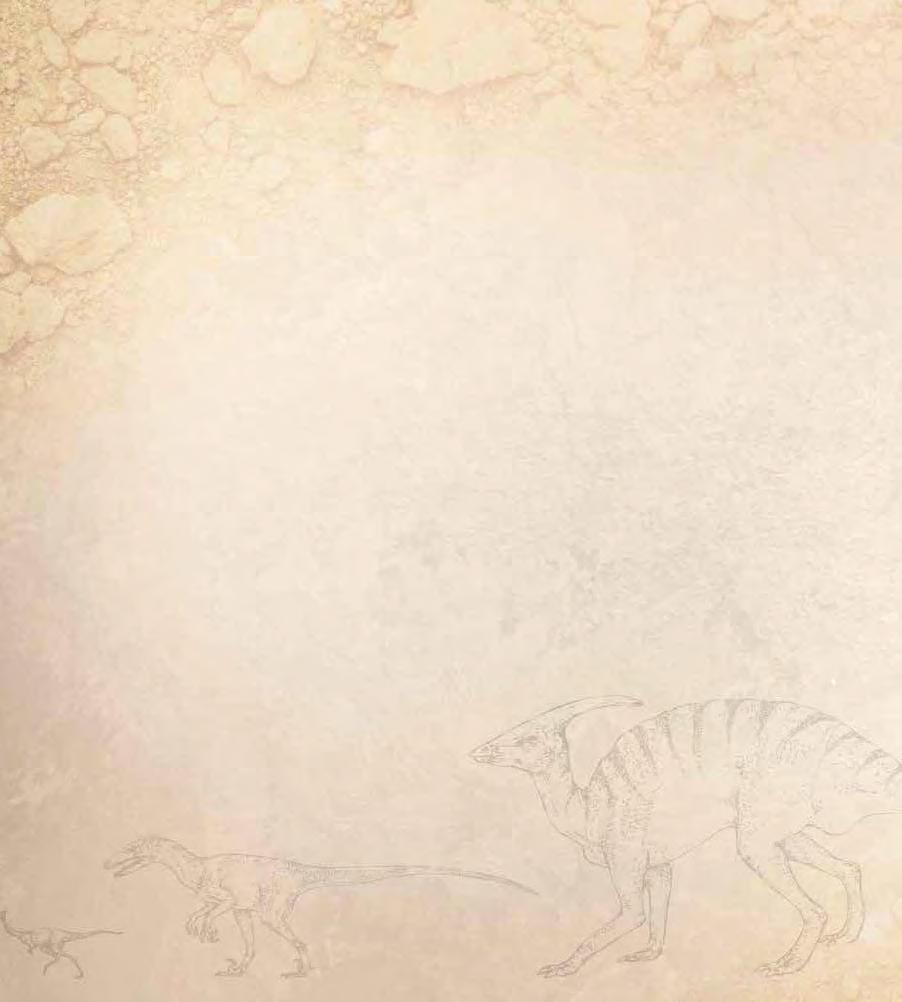
India asked the museum if she could work there during FVS’s Interim week and went there expecting to work on preparing the allosaurus bones, but Don wouldn’t let her, saying that it was Jim’s job. Next, the museum’s board of directors lost interest in paleontology and wanted to focus elsewhere, so Don and Jim were let go. It was the end of an era.
India continued on in paleontology for a while. She went to Dartmouth, took science classes, and even got a grant to return to the dig site for another summer after her freshman year. She loved the work, but couldn’t shake the feelings of loneliness in the field. It was clear that she didn’t want to keep living life alone. In 1986, she went back to visit the Denver Museum of Natural History. She toured the backroom and saw what had become of the paleontology department. Alice’s bones had been left to gather dust in a backroom of the museum. All of India’s doubts about the profession came to a head.
“I remember seeing it piled in this closet, and I was heartbroken...I thought, I’m done. Alice is never going to go on display, and I need to do something else with my life anyway.” India closed the book on Alice and moved on. She graduated from college and married Paul, one of her Dartmouth classmates. Ten years passed. India worked for a few years in the publishing industry, traveled extensively, and got an MBA. She and Paul settled down in Boston. And then she got a call out of the blue from Richard Stuckey at the Denver Museum of Natural History who told her that her allosaurus is complete.
Stuckey was hired by the museum in 1989 and charged with revitalizing the paleontology department, which had recently received funding. He planned to build a new fossil hall. When he came across India’s allosaurus scattered around in dusty cabinets he was stunned, saying that the allosaurus was in the top one percent of the best preserved dinosaur specimens that had ever been discovered in terms of how well preserved the bones were. He wanted to make Alice the centerpiece of the new dinosaur hall, and he wanted India’s story to be a part of it.
He said, “What really stands out in her story is her dedication to finding those specimens, preparing those specimens, and then getting in touch with the museum and working with the museum to get them
into the collection...It’s a really rare thing for a person that age to get so engaged with a scientific topic.” Stucky and his team had been working on putting Alice together for the past several years. When India got the call, Alice’s display was almost complete. They invited her out to see it before the exhibit opened.
Upon seeing it, and despite the surrealness of the moment, she recognized that in a way, the fantasies of her 12-year-old-self were, after all these years, coming to fruition. “I felt immense pride and joy. It was almost like having a child.” India thinks she will never outrun the allosaurus. She has written a memoir. The working title is A Girl’s Guide to Excavating Dinosaurs, and she is currently revising the initial draft and seeking a publisher. India did not become a paleontologist. She majored in English literature at Dartmouth and earned her MBA from the MIT Sloan School of Management. She founded a business research firm that produces industry studies.
For India, in the end, digging up Alice wasn’t about becoming a paleontologist; it was about becoming herself. “It was who I was. I was a very inquisitive, determined, pain in the ass. The dinosaur was a perfect fit for me growing up. I don’t know what I would have done otherwise...I think kids need adventures, everybody needs adventures, and I was lucky enough to hook into one that lasted several years. But most kids don’t have a mother who drags them off to some godforsaken ranch and says, ‘Oh, go hunt dinosaur bones or whatever. I’ll see you in three days.’ We need to figure out a way for more kids to be dumped off in the middle of nowhere.”
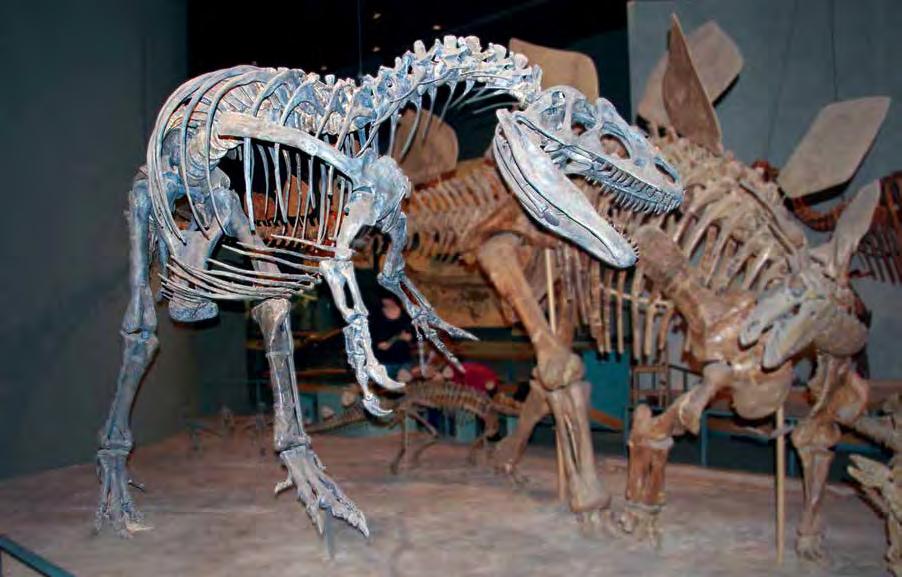

The fully mounted allosaurus, left, at the Denver Museum of Nature and Science, which was mounted in 1995 as part of the Prehistoric Journey exhibit






